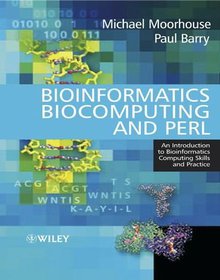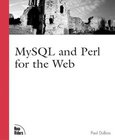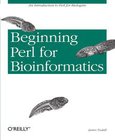Bioinformatics Biocomputing and Perl
An Introduction to Bioinformatics Computing Skills and Practice

Book Details:
| Publisher: | Wiley |
| Series: | Wiley , Practice |
| Author: | Michael Moorhouse |
| Edition: | 1 |
| ISBN-10: | 047085331X |
| ISBN-13: | 9780470853313 |
| Pages: | 508 |
| Published: | Jul 02 2004 |
| Posted: | Nov 19 2014 |
| Language: | English |
| Book format: | |
| Book size: | 3.36 MB |
Book Description:
Bioinformatics, Biocomputing and Perl presents a modern introduction to bioinformatics computing skills and practice. Structuring its presentation around four main areas of study, this book covers the skills vital to the day-to-day activities of today's bioinformatician. Each chapter contains a series of maxims designed to highlight key points and there are exercises to supplement and cement the introduced material.Working with Perl presents an extended tutorial introduction to programming through Perl, the premier programming technology of the bioinformatics community. Even though no previous programming experience is assumed, completing the tutorial equips the reader with the ability to produce powerful custom programs with ease.Working with Data applies the programming skills acquired to processing a variety of bioinformatics data. In addition to advice on working with important data stores such as the Protein DataBank, SWISS-PROT, EMBL and the GenBank, considerable discussion is devoted to using bioinformatics data to populate relational database systems. The popular MySQL database is used in all examples.Working with the Web presents a discussion of the Web-based technologies that allow the bioinformatics researcher to publish both data and applications on the Internet.Working with Applications shifts gear from creating custom programs to using them. The tools described include Clustal-W, EMBOSS, STRIDE, BLAST and Xmgrace. An introduction to the important Bioperl Project concludes this chapter and rounds off the book.
Download Link:
Related Books:
MySQL and Perl for the Web
MySQL and Perl for the Web provides a much-needed handbook for database and Web developers seeking an extensive and detailed guide for using the combination of MySQL and Perl to build dynamic and interactive database-backed Web sites. It shows how to use Perl's DBI database access module, pairing it with with the CGI.pm module that allows Web pages and forms to be generated and processed easily. These tools provide developers with a solid foundation for creating applications that incorporate database content to create dynamic, up-to-date Web sites. The book employs a practical learn-by-doing approach that demonstrates development techniques by building complete applications, not just fragmentary pieces. It shows what to do at each step of the way dur...
Developing Web Applications with Apache, MySQL, memcached and Perl
The only book to address using cache to enhance and speed up Web application development * Developers use Apache, MySQL, memcached, and Perl to build dynamic Web sites that store information within the MySQL database; this is the only book to address using these technologies together to alleviate the database load in Web development* Covers each of the four systems and shows how to install, set up, and administer them; then shows the reader how to put the parts together to start building applications* Explains the benefits of a base perl library for code re-use, and provides sample applications that demonstrate in a practical way the information covered in the previous chapters* Examines monitoring, performance, and security, with a problem-solving c...
Beginning Perl for Bioinformatics
With its highly developed capacity to detect patterns in data, Perl has become one of the most popular languages for biological data analysis. But if you're a biologist with little or no programming experience, starting out in Perl can be a challenge. Many biologists have a difficult time learning how to apply the language to bioinformatics. The most popular Perl programming books are often too theoretical and too focused on computer science for a non-programming biologist who needs to solve very specific problems.Beginning Perl for Bioinformatics is designed to get you quickly over the Perl language barrier by approaching programming as an important new laboratory skill, revealing Perl programs and techniques that are immediately useful in the lab. ...
2007 - 2021 © eBooks-IT.org



